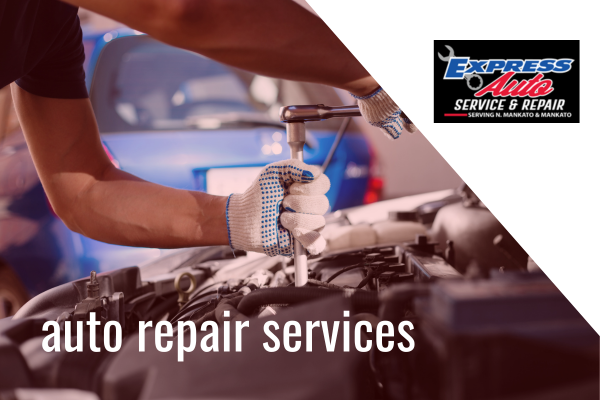All Categories
Featured
Appropriate tire maintenance is key to extending the life of your lorry and making certain a smooth and risk-free driving experience. Two of the most important tire solutions are tire turning and placement. These services not only prevent premature tire wear however likewise improve handling, fuel efficiency, and general safety. If you're unknown with what tire turning and placement entail, here's an extensive check out why they matter and just how they profit your lorry.
What Is Tire Turning? Tire rotation describes moving your tires from one setting to an additional to ensure they put on evenly. The reason tire turning is needed is because not all tires use similarly. In front-wheel-drive automobiles, for instance, the front tires deal with both steering and power, which makes them break faster than the back tires. Similarly, the back tires wear differently in rear-wheel-drive and all-wheel-drive vehicles.
By revolving your tires frequently, you can balance out the wear throughout all four tires. This assists them last longer and allows for more also traction, boosting handling and security. The majority of suppliers recommend revolving your tires every 6,000 to 8,000 miles or based on the automobile's handbook.
What Is Tire Placement? Tire placement, also referred to as wheel alignment, describes the process of changing the angles of your automobile's wheels to satisfy the maker's specs. The objective of alignment is to guarantee that all 4 tires are aiming in the appropriate direction and at the appropriate angles, which allows for optimal handling, security, and tire life.
There are three primary alignment angles that are adjusted during an alignment check:

Camber: The tilt of the wheels when checked out from the front. If the camber is off, it can lead to irregular tire wear, as the tire will certainly not make complete call with the road surface area. Caster: The angle of the steering axis when checked out from the side. Proper wheel alignment guarantees that your lorry is secure when driving straight which your wheel returns to its typical placement after a turn. Toe: The angle at which the tires aim inward or outside when watched from above. Inaccurate toe alignment can create the tires to drag, bring about irregular wear and lowered fuel efficiency. Misalignment can take place in time as a result of regular driving or from hitting challenges like visuals or holes. If your positioning is off, it is necessary to obtain it inspected and dealt with to stay clear of concerns in the future.
Why Tire Rotation and Alignment Issue. Enhanced Tire Life:. Regular tire rotation ensures even tire wear, assisting you obtain one of the most gas mileage out of your tires. Unequal wear can trigger you to change tires too soon, which can be expensive. When your tires put on uniformly, they last much longer, conserving you money in the long-term.
Enhanced Vehicle Handling:. Correct placement maintains your car driving straight and secure, particularly at higher speeds. Imbalance can create your car to draw to one side, making it more difficult to guide. By maintaining your tires straightened, you ensure your car takes care of more smoothly and predictably.
Enhanced Safety And Security:. Tires that are not revolved or aligned appropriately can put on erratically, impacting how well your automobile stops and corners. For instance, misaligned tires or tires with irregular wear patterns may create lowered traction, specifically in wet or icy problems, causing a higher threat of accidents.
Better Fuel Performance:. Tires that are misaligned can create moving resistance, suggesting your engine has to function tougher to move the automobile. This raises gas consumption and lowers your auto's gas effectiveness. Appropriate tire positioning decreases rolling resistance, which can improve gas mileage.
Indications Your Tires Required Turning or Alignment. While it's necessary to remain on top of routine tire turnings and placements, there are a couple of indications that may indicate your tires need focus:
Unequal Put On: If you observe that one tire is a lot more worn than the others, it's most likely time for a turning. Guiding Pull: If your cars and truck draws to one side or really feels off-center, it can be an indication of misalignment. Vibrations: If you really feel resonances in the guiding wheel or the auto, it might be because of a positioning concern. Noisy Tires: Screeching or loud tires might suggest incorrect rotation or misalignment. If you see any of these indications, it is very important to get your tires inspected by a professional.
How Frequently Should You Revolve and Straighten Your Tires? Tire rotation should generally be done every 6,000 to 8,000 miles, though this can differ based upon your driving problems and the type of automobile you drive. It's likewise an excellent concept to have your tires rotated whenever you get an oil adjustment.
For alignment, you should have your tires aligned every 1-2 years, or more often if you observe any issues with dealing with or unequal tire wear. If you hit a big split or curb, it's smart to get a positioning examine as soon as possible.
Conclusion: Routine Upkeep for Ideal Efficiency. Tire turning and positioning are 2 basic but crucial solutions that maintain your cars and truck running smoothly, efficiently, and securely. By turning your tires frequently and keeping your wheels appropriately aligned, you can extend the life of your tires, improve handling, and appreciate much better fuel efficiency.
Latest Posts
Boost Your Home's Security with Quality Soffit and Fascia
Car Repair Shop Nearby Quickly! at MO
Discover the Delight of an Easy-to-Clean Bath Fitter Bathtub